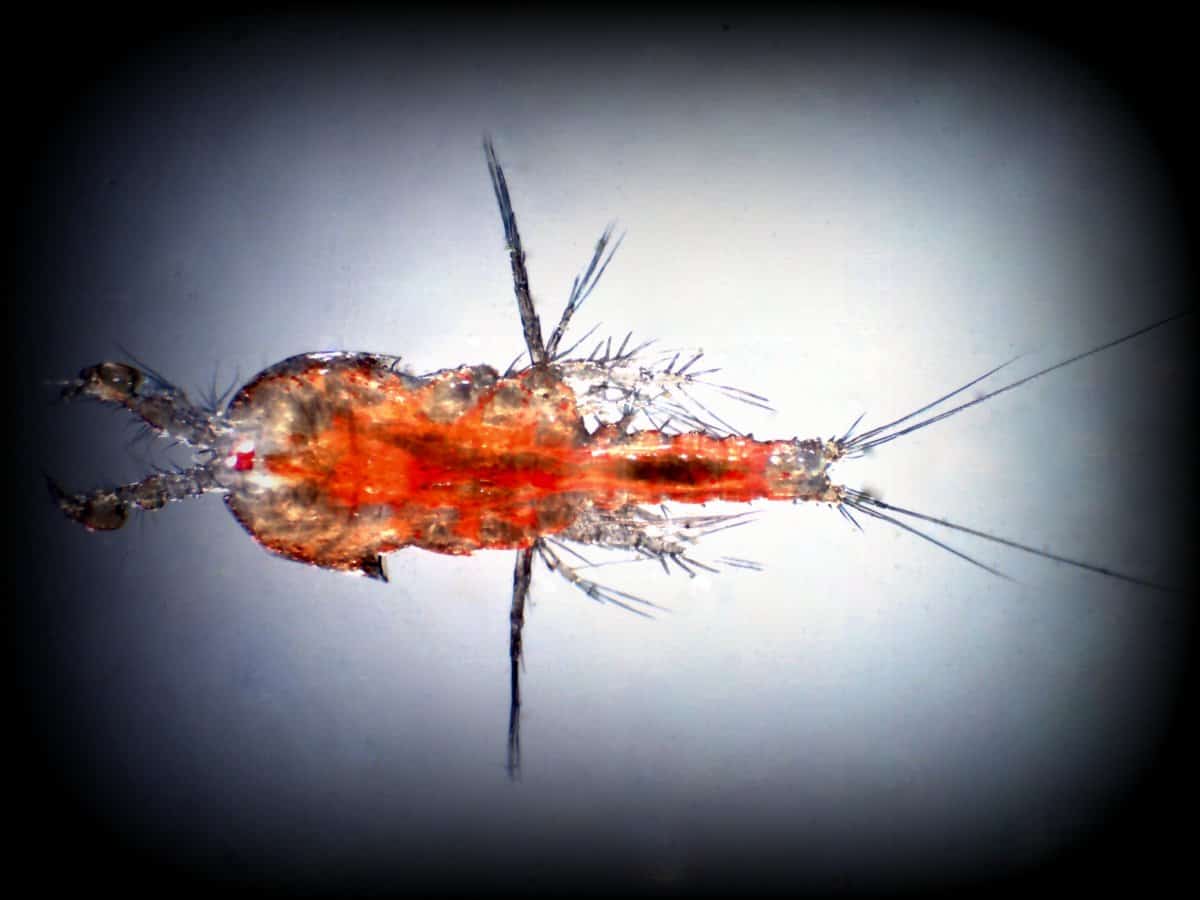Top Live Pods for your Reef Tank
by Heather H.
You can’t really go wrong when adding live copepods to your tank. Just be sure that the species you are adding will be right for your goals. Copepods are tiny crustaceans that can be found worldwide in all types of water and are a critical link in the food chain. Many aquarists like to add pods and other live foods to their tanks for their coral and certain finicky fishes. When doing so, it is recommended to introduce them to a refugium with live rock and macroalgae and even then, you may have to re-seed every once in a while. Introducing live foods in the evening can also give them time to adjust to the tank when predators are less active.
 photo provided by Reef2Reef
photo provided by Reef2Reef
Tigger Pods: Tigriopus californicus – Tigger pods are among the hardiest and most adaptable of all known marine invertebrates and are of great use to aquarists. They are highly effective scavengers, feeding upon detritus and even nuisance algae. The adults are typically bright red in color and large for a harpacticoid copepod (up to three millimeters in length). T. californicus adults are benthic (crawling on substrate and rock surfaces) as adults. This puts them within easy reach of the small-mouthed mandarins and dragonets. Their naplii are pelagic (free swimming in the water column) and are beneficial to filter-feeding invertebrates such as corals, tube worms, tunicates, etc. Tigger pods are loaded with astaxanthin (color enhancement), fatty acids, and amino acids making them remarkably nutritious. The size of the population may fluctuate and more may have to be added over time.
 photo provided by brittanica.com
photo provided by brittanica.com
Amphipods: Amphipods a diverse group of crustaceans and are a tasty, nutritious treat for many marine organisms. These little invertebrates are extremely hardy and mostly found on seafloors. The anatomy of the amphipod is similar in structure to that of a shrimp, with antennae, segmentation down the body and several different appendages of different function. Personally, I think they resemble cute little “pill bugs”. Hyalella azteca range from 3 – 8 mm in size. Amphipods are detritivores, surviving on organic particles, seaweed, other macroalgae, decaying organisms and bacteria that live in the seabed (meaning that they will help keep your tank cleaner!). Aquarists often have great success when feeding amphipods to more sensitive or picky eaters perhaps due to their high nutrient content. Mandarins and seahorses love them, and I have been told that they are “the gateway live food” to a frozen food diet.
Other Copepods: Tisbe sp. and Apocyclops sp. are harpacticoid copepods that are resilient and easy to grow. They are much smaller than tigger pods (less than one millimeter), but are just as sought after by aquarists and their reef organisms. The adults will spend most of their time on the substrate making it ideal food for mandarins, dragonets, pipefishes, seahorses, leopard wrasses and any other fish that spend their time picking food off of rocks and sand. Juvenile nauplii are very small and spend their time moving through the water column and are ideal for refugiums and organisms that feed from the water, making them a good live feed for SPS corals/filter feeders as well. These pods are also detritivores and can consume excess food and waste making them a perfect “micro” clean-up crew. These pods are a great first start for anyone looking to build a culture within their tank.
Two other live foods reefers may add to their tanks include:
Rotifers: Rotifers are small (50-1000 µm) zooplankton that occur in freshwater, brackish, and marine environments. Rotifers feed on microalgae and are consumed by a wide variety of fish, shellfish, corals, and other organisms. Under optimal conditions rotifer culture will double in the population every day.
The most commonly used marine rotifers are the species Brachionus plicatilis (L-type) and Brachionus rotundiformis (S-type and SS-type). We keep the S-type which is great for small fish fry like rams, clownfish, etc. and also good to use for SPS coral in reef tanks. I like to enrich them with fatty acids and microalgae before straining them through a coffee filter to feed.
Baby Brine Shrimp: Artemia spp. – Newly hatched brine shrimp are very nutritious for the first 24-48 hours. This is a great food for small fish and are very important in rearing aquacultured fish and invertebrates. These little guys are packed with canthaxanthin, fatty acids, and protein. For a reef tank, turn off the flow before feeding and watch the coral open and nab individuals from the water column. Best if drained and rinsed using a coffee filter.
We have all of these products available for purchase. Stop by and ask for one of our Aquaculture or Reef Specialists to help you choose the right type of pod for your tank.

